Laws Of Motion – Complete Guide For Class 11 Physics Chapter 4
Welcome to iPrep, your Learning Super App. Our learning resources for Chapter 4, “Laws of Motion,” in Class 11 Physics are meticulously designed to ensure students gain a comprehensive understanding of this essential topic. These resources include detailed notes on fundamental concepts such as Newton’s Laws of Motion, which explain the relationship between force, mass, and acceleration. Visual aids like free-body diagrams help students analyze the forces acting on objects in different scenarios. Additionally, we cover real-life applications, such as friction, and how it influences the motion of objects on various surfaces.
Interactive examples, including the motion of vehicles on inclined planes and banked roads, make the learning process more engaging. Practice problems are provided to reinforce key principles and boost problem-solving skills.
The concept of “Laws of Motion” in Class 11 Physics delves into the foundational principles of science by exploring the methods and standards used to quantify and describe physical phenomena. This chapter introduces students to Newton’s Three Laws of Motion, which are pivotal in understanding how forces govern the motion of objects.
It covers the concept of inertia, the relationship between force and acceleration, and the idea of action and reaction forces. Students also learn about friction, its types, and its role as both a resistive and necessary force in daily life. Furthermore, the chapter applies these laws to real-world situations, including projectile motion, circular motion, and vehicle dynamics, providing a solid foundation for future studies in mechanics and engineering.
Aristotle’s Fallacy
Aristotle believed that an external force is required to keep a body in uniform motion. This idea was later proven incorrect.

Galileo’s Law of Inertia
Galileo’s observations on the motion of objects on an inclined plane include:
- Objects moving down a smooth inclined plane accelerate.
- Objects moving up a smooth inclined plane decelerate.
- Objects moving on a frictionless horizontal plane maintain constant velocity with no acceleration or retardation.
Types of Inertia
Inertia refers to the resistance of an object to change its state of motion. There are three types of inertia:
Type of Inertia Definition Inertia of Rest A body at rest stays at rest and cannot start moving on its own. Inertia of Motion The inability of a body to change its uniform motion by itself. Inertia of Direction The inability of a body to change its direction of motion by itself.
Newton’s First Law of Motion (Law of Inertia)
Newton’s First Law states that a body remains at rest or in uniform motion unless acted upon by an external force. This law describes the property of inertia.
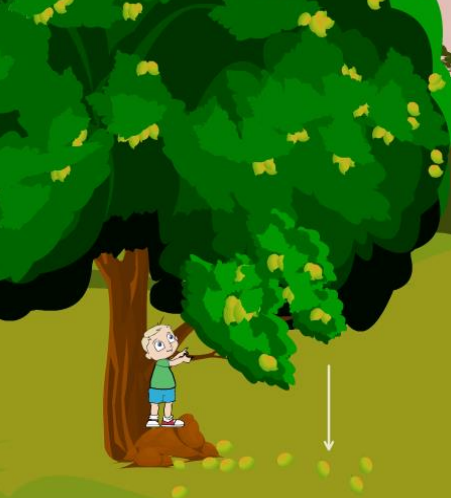
Example: When a branch of a mango tree is shaken, mangoes fall due to inertia.
Newton’s Second Law of Motion
The second law states that the rate of change of momentum of a body is proportional to the applied force and takes place in the direction of the force.
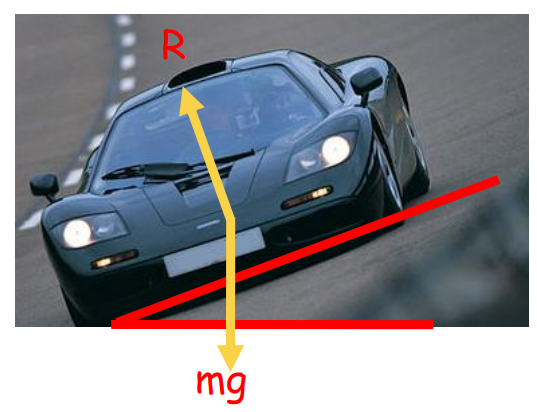
Units of Force
Unit Type Formula Absolute Units 1 Newton = 1 kg·m/s² 1 dyne = 1 g·cm/s² Gravitational Units 1 kgf = 1 kg × 9.8 m/s² = 9.8 N 1 gf = 1 g × 980 cm/s² = 980 dyne
Impulse
Impulse refers to forces acting on a body for a very short time and is the measure of the total effect of the force.

Example: Hitting a ball with a bat.
Effects of Impulse
- A cricket player lowers his hands while catching the ball to reduce the impact.
- It is more challenging to catch a cricket ball compared to a tennis ball due to its greater impulse.
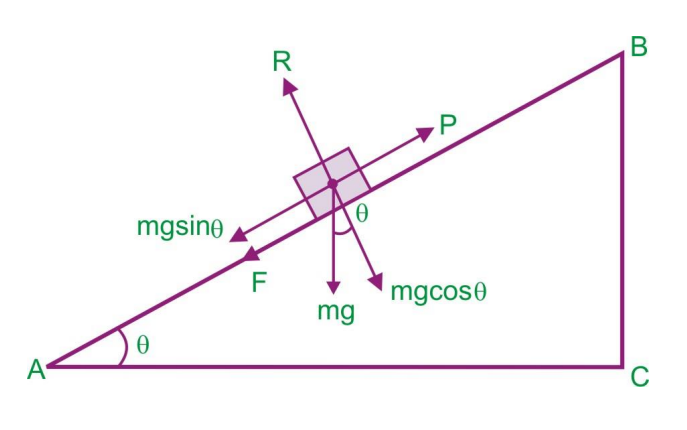
Newton’s Third Law of Motion
Newton’s Third Law states: For every action, there is an equal and opposite reaction. The forces act in opposite directions.
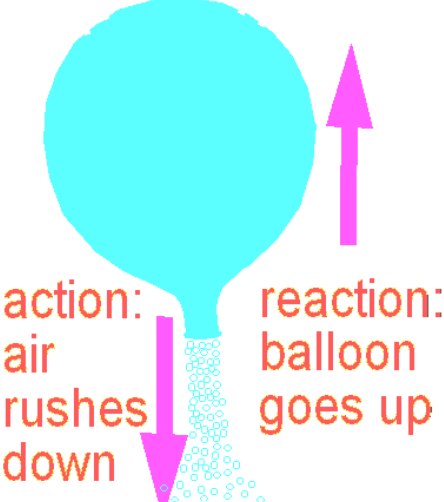
Principle of Conservation of Linear Momentum
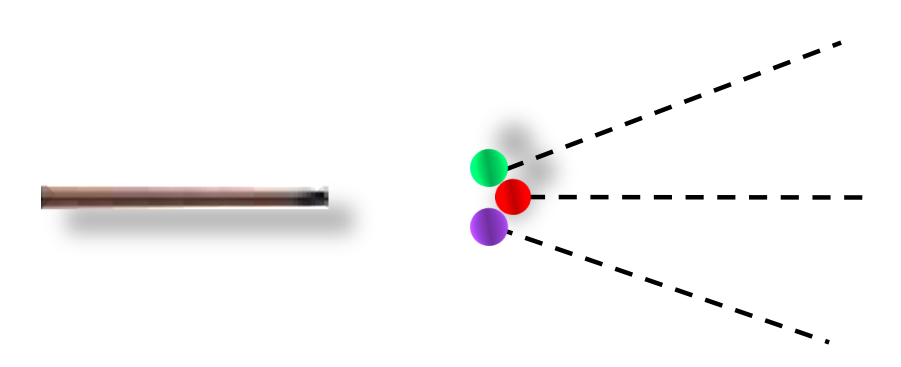
The total momentum of an isolated system remains conserved. Some applications include:
- Recoil of a gun
- Explosion of a bomb
Equilibrium of a Particle
When multiple forces act on a point, these are called concurrent forces. For a particle to be in equilibrium, the forces acting on it must be equal and opposite.
F1=F2
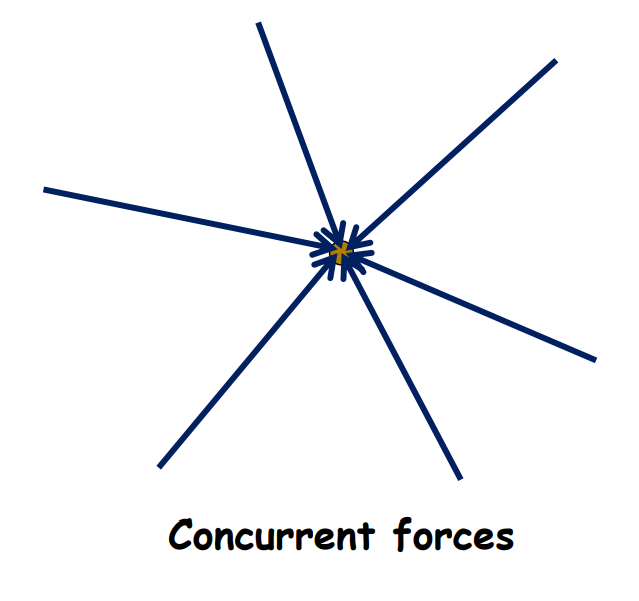

Friction
Friction is an opposing force that arises when one body moves or tends to move over the surface of another.
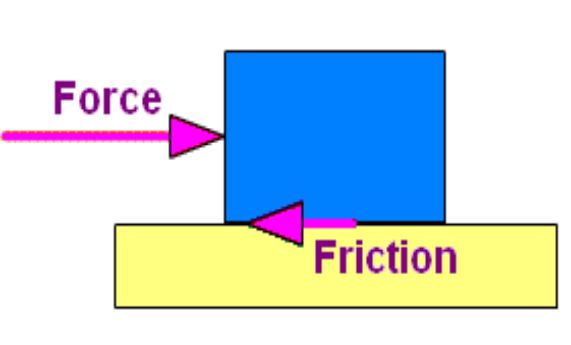
Types of Friction
| Type of Friction | Definition |
| Static Friction | Opposing force that acts when a body tends to move but has not yet started moving. |
| Limiting Friction | The maximum opposing force that occurs when a body is on the verge of motion. |
| Kinetic Friction | Opposing force when one body is actually moving over another. |
| Sliding Friction | Opposing force that acts when one body is sliding over the surface of another. |
| Rolling Friction | Opposing force that acts when one body is rolling over the surface of another. |
Limiting Friction Kinetic Friction


Sliding Friction Rolling Friction
Angle of Friction
The angle of friction is the angle between the resultant of the force of limiting friction F and normal reaction R, denoted by θ.
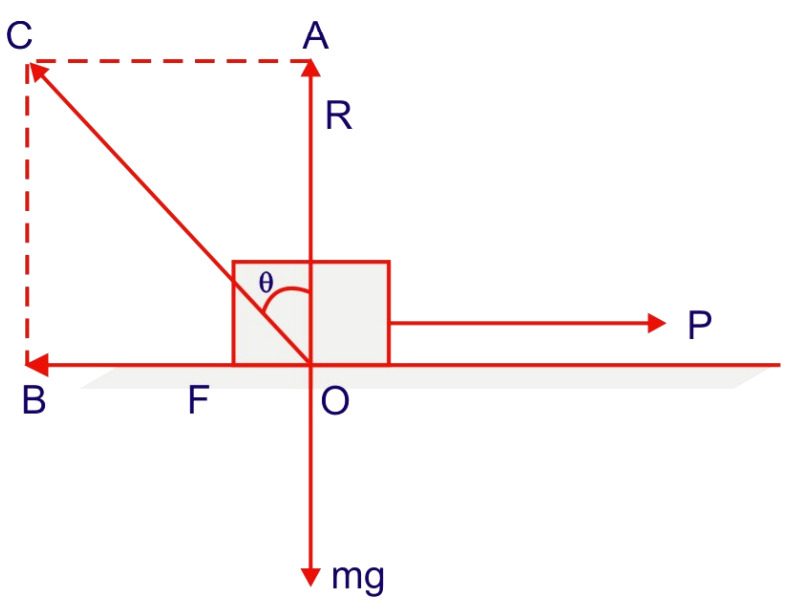
Angle of Repose
The angle of repose is the minimum angle of inclination of a plane with the horizontal such that a body just begins to slide down.
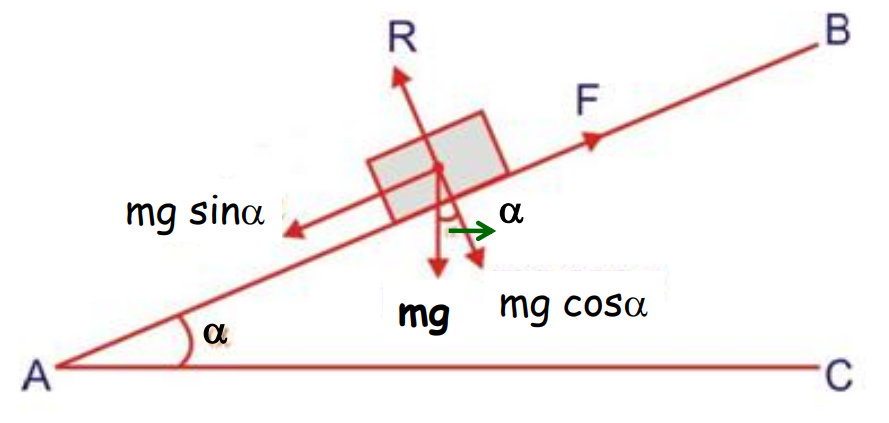
Acceleration of a Body Down a Rough Inclined Plane
When a plane is inclined at an angle θ\thetaθ, greater than the angle of repose, the body slides down with acceleration:
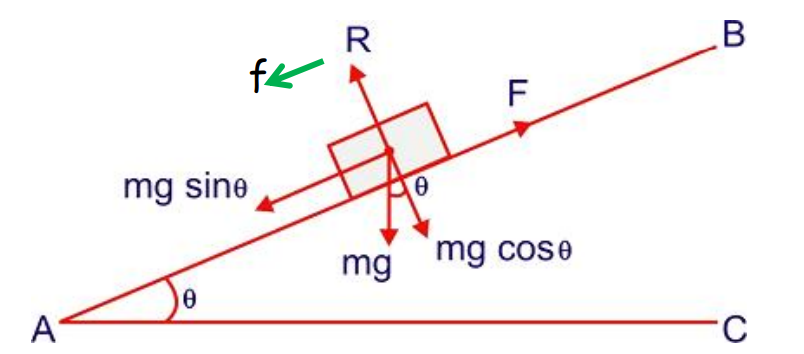
a=g(sinθ−μcosθ)
Work Done in Moving a Body Up a Rough Inclined Plane
When moving a body up a rough inclined plane, three forces act:
- Weight (mg): Acts vertically downward.
- Normal Reaction (R): Acts perpendicular to the plane.
- Friction (F): Acts down the plane.

Friction: A Necessity and an Evil
Necessity of Friction:
- Enables walking.
- Helps objects stick together.
- Essential for brakes in vehicles.
Evil of Friction:
- Causes wear and tear of machinery.
- Produces heat, which may damage machines.
Methods to Reduce Friction
- Polishing surfaces.
- Lubrication.
- Using ball bearings.
- Streamlining objects.
Uniform Circular Motion
In uniform circular motion, a set of particles moves around a fixed point at a constant distance from that point. The change in direction of velocity results in centripetal acceleration.
F=mv2/r
a=v2/r
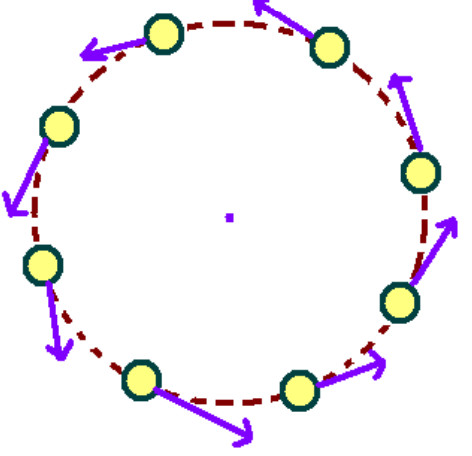
Motion of a Car on a Level Road
Three forces act on a car moving on a level road:
- Weight (mg): Acts vertically downward.
- Normal Reaction (R): Acts vertically upward.
- Frictional Force (f): Acts along the road surface towards the center of the turn.

Motion of a Car on a Banked Road
On a banked road, three forces act on a car:
- Weight (mg): Acts vertically downward.
- Normal Reaction (R): Acts perpendicular to the road.
- Frictional Force (f): Acts between the road and the tires.

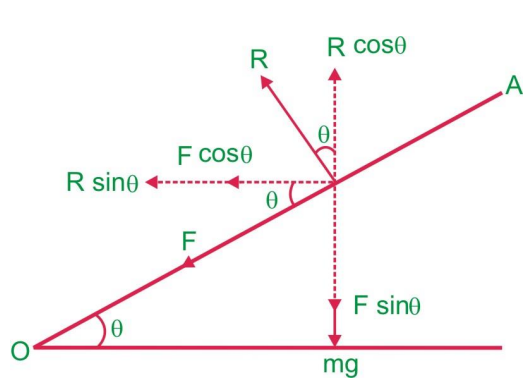
Solving Problems in Mechanics
Steps:
- Draw a figure showing the assembly of bodies.
- Draw a free-body diagram showing all forces acting on the system.
- Apply laws of motion and solve for the unknowns.
Conclusion
This comprehensive guide on “Laws of Motion” provides an in-depth exploration of the fundamental aspects of physics as outlined in Class 11. It covers the core concepts of units, measurements, and the importance of standardization in scientific studies.
The guide explains Newton’s Three Laws of Motion, starting with the Law of Inertia, which describes how objects resist changes to their state of motion. It delves into the Second Law, which connects force, mass, and acceleration, offering insights into how forces cause changes in motion. The Third Law, commonly known as the law of action and reaction, is explored with practical examples to illustrate its everyday significance. Additionally, topics such as friction, impulse, and the conservation of momentum are discussed, providing a holistic view of the mechanics that govern motion in the physical world.
Practice questions on Chapter 4 - Laws of Motion
Get your free Chapter 4 - Laws of Motion practice quiz of 20+ questions & detailed solutions
Practice Now








